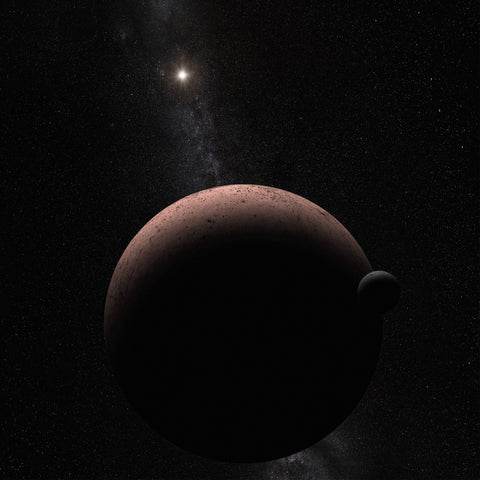Nestled beyond the orbit of Neptune lies a region shrouded in mystery and fascination - the Kuiper Belt. Named after Dutch astronomer Gerard Kuiper, this vast expanse of icy bodies offers a window into the outer reaches of our solar system. In this blog, we embark on a journey to unravel the secrets of the Kuiper Belt and explore its significance in our understanding of the cosmos.
The Discovery of the Kuiper Belt:
Discovered in 1992 by astronomers David Jewitt and Jane Luu, the Kuiper Belt revolutionized our understanding of the solar system's architecture. Initially hypothesized by Gerard Kuiper in the 1950s, this region was postulated to be a reservoir of icy bodies leftover from the formation of the solar system. The confirmation of its existence opened new avenues for exploration and discovery.
Composition and Characteristics:
The Kuiper Belt is composed primarily of icy bodies, including dwarf planets, comets, and countless smaller objects known as Kuiper Belt Objects (KBOs). These objects are remnants of the early solar system, preserving valuable clues about its formation and evolution. The largest known dwarf planet in the Kuiper Belt is Pluto, which was reclassified as such in 2006 following the discovery of other similar-sized objects in the region.
Dynamics and Formation:
The dynamics of the Kuiper Belt are shaped by the gravitational influence of Neptune and the scattered disk objects beyond it. Many KBOs exhibit eccentric orbits, influenced by gravitational interactions with larger planets and celestial bodies. The formation of the it is believed to be a result of the outward migration of Neptune during the early stages of the solar system's formation, which scattered icy debris from the outer regions into its current location.
Exploration and Discoveries:
The exploration has been primarily conducted through robotic spacecraft missions, including NASA's New Horizons mission. Launched in 2006, New Horizons conducted a historic flyby of Pluto in 2015, providing unprecedented insights into the distant dwarf planet and its moons. Following its successful encounter with Pluto, New Horizons continued its journey deeper into the Kuiper Belt, making additional discoveries and observations of KBOs along the way.
The Kuiper Belt stands as a testament to the ongoing exploration and discovery within our solar system. From its humble beginnings as a theoretical construct to its confirmation as a vast reservoir of icy bodies, the Kuiper Belt continues to captivate scientists and enthusiasts alike. As we continue to probe its mysteries and unravel its secrets, the Kuiper Belt serves as a reminder of the boundless wonders awaiting exploration in the outer reaches of our cosmic neighborhood.






